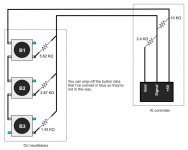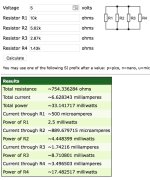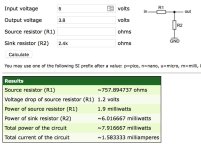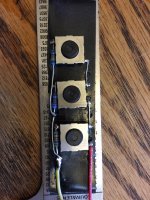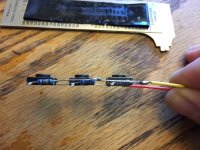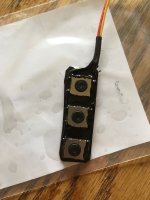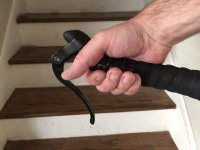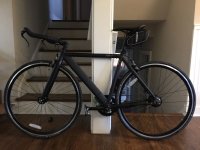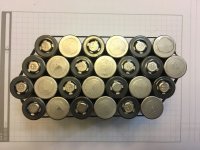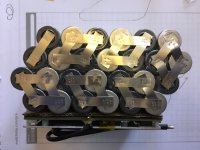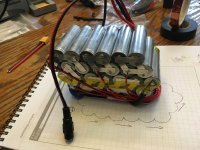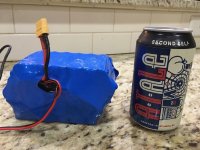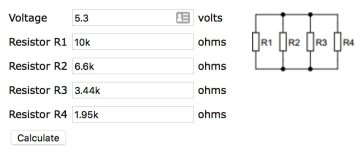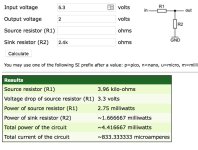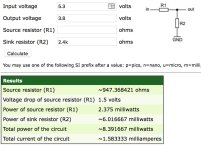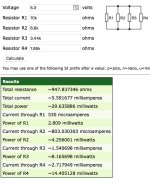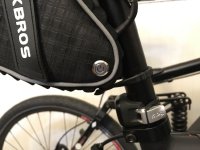So since I couldn't do any more work on my bike, I figured I'd shift gears and do some work on my 2nd attempt at a seat bag battery. If you go back to page 3 of this thread, You'll see that I made an idiot mistake and welded series strips in the middle of my parallel strips. This was a huge mistake, and I was really lucky that I didn't cause a short that would have resulted in fire. I'm not even going to show the pic of that since it was such a stupid mistake.
I had pulled that pack apart, and when I did, I realized I'd melted the insulation on the battery cells in several places. There was a smidgen of plastic left there, but it was only luck that the nickel strips were stiff enough that they didn't flex down and onto the exposed negative pole shells. I scavenged the cells that were undamaged and bought a few more to make my current pack that lives in my backpack (which is working great by the way).
With the cells that were left, I filed smooth the ends, and tested them through a few cycles by using them in turns in my vaporizer (2-cell, 70W eCig) and confirmed that they were ok. So I ordered a few more cells, and I got to replacing the pads and shrink-wrap on all of the cells. For coolness alone, I decided to get black pads and clear shrink-wrap. I ordered the bits from IMR batteries, and the quality was very good. The pads are paper (won't melt) and nice and thick (like poster-board or card-stock at the minimum) and the shrink-wrap ended up being slightly thicker than the stock LG stuff. Since they looked so nice and the pads were thicker than the stock stuff, I decided to do the new cells too.
Here's a couple of pics of the freshly padded and shrink-wrapped cells, just for ooo's and ahhh's:
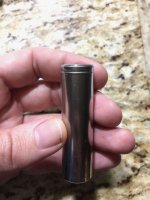
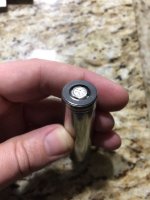
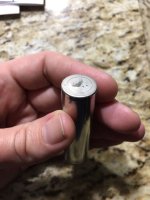
I don't think I ever mentioned it, but I'm using LG MJ1 3500 mAh cells. If you're curious, you can see what they look like in the factory shrink-wrap in one of my earlier posts
here.
The pads and shrink-wrap I got from IMR Batteries was top-notch. The pads are self-adhesive stickers, which makes positioning them very easy and they're twice as thick as the factory pads. The shrink-wrap was precut to the perfect length. It fully covers the pads with no slop when you center the cell in the shrink-wrap. It's even better than the factory stuff in my opinion.
Oh, I should note that I filed down the welds while the old wrap was still on there being careful to avoid the bare spots, and after filing off the weld marks, I blew off the cells with compressed air after removing the factory shrink-wrap. I also cleaned all the surfaces with alcohol wipes.
I like the look of these shiny metal cells so much that I may wrap the battery in clear packing tape. They'll be in a bag, so no one will see them but me, but its one of those things that will make me smile whenever I take the battery out of the bag.



